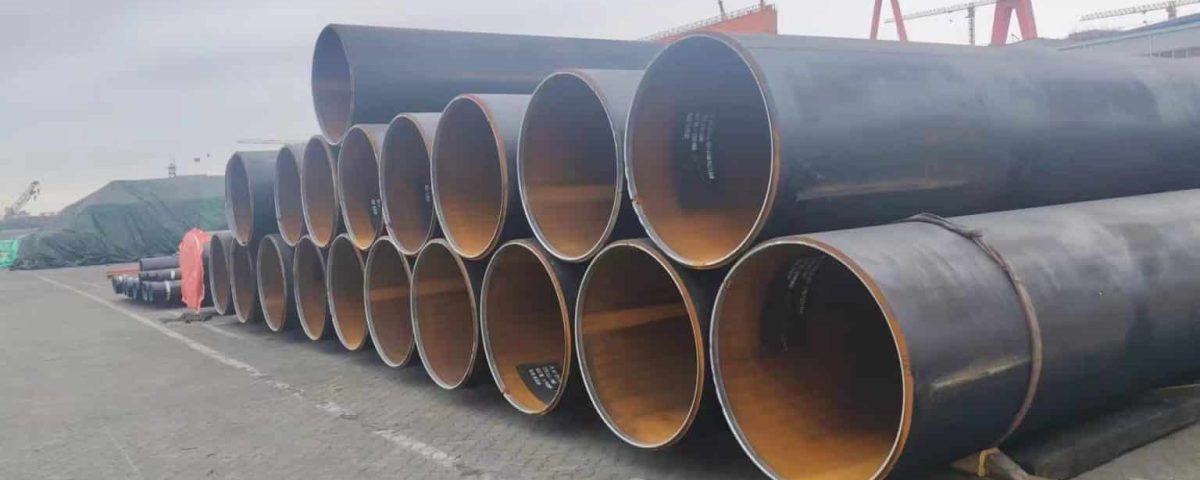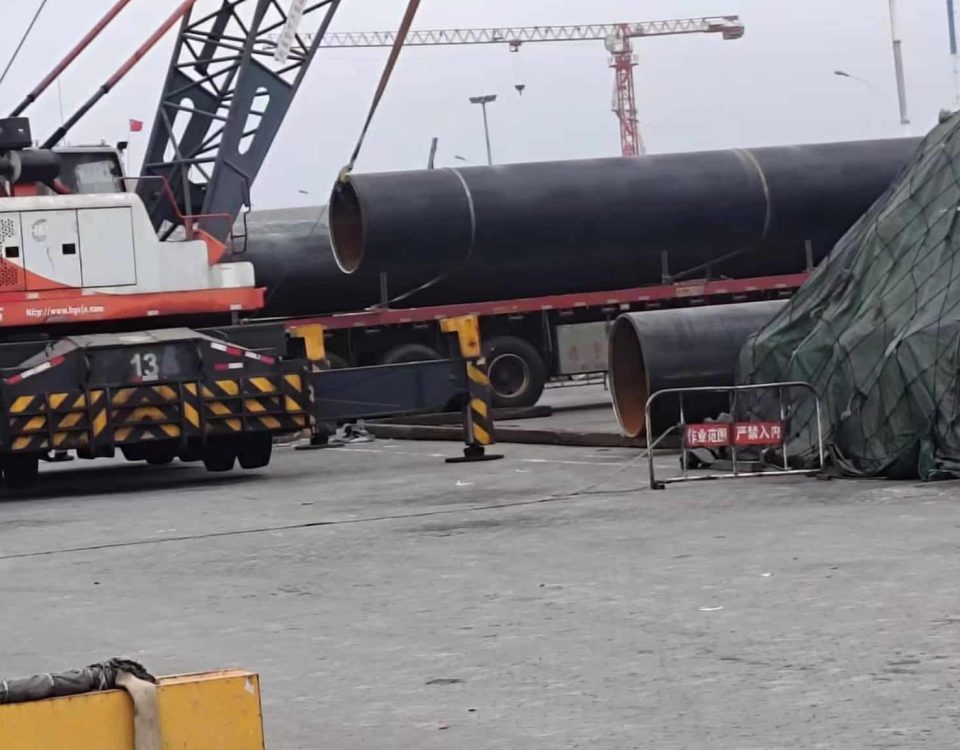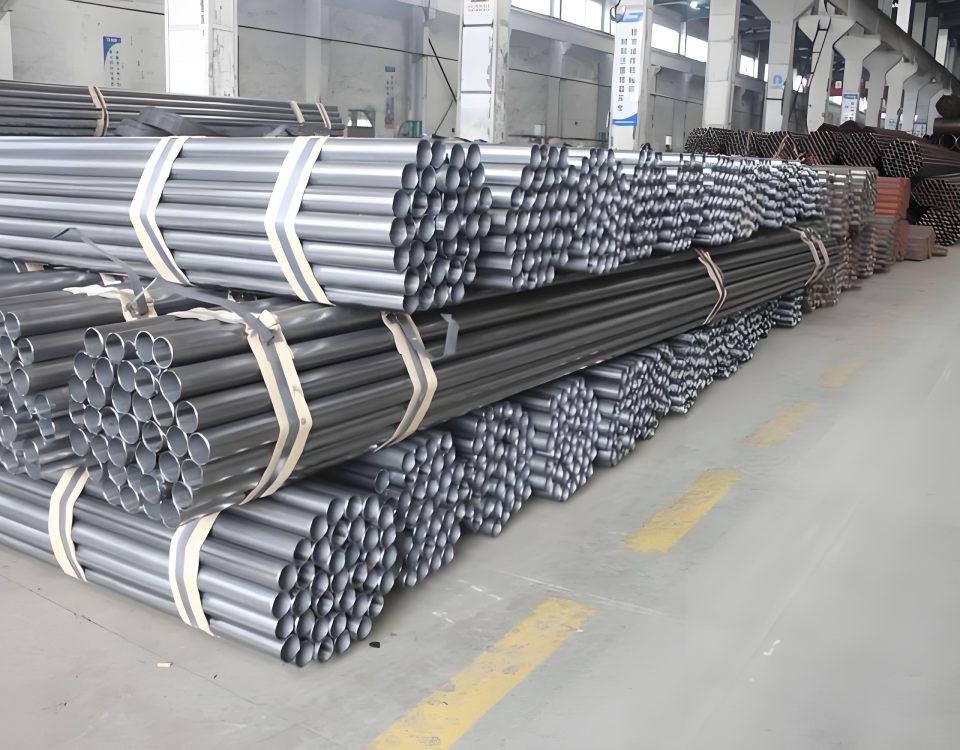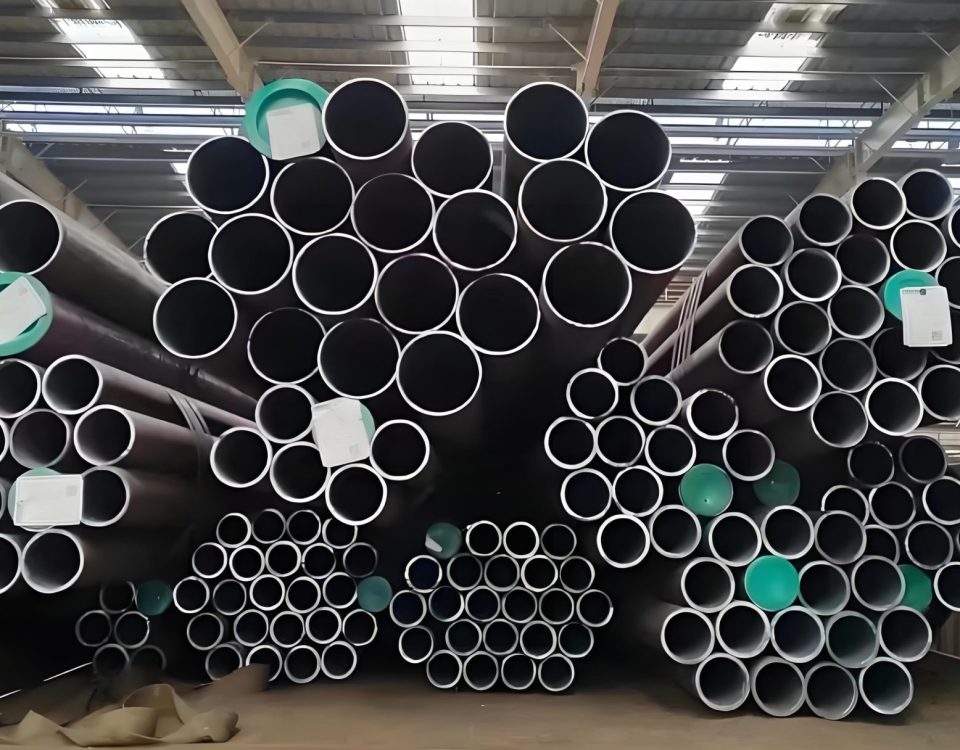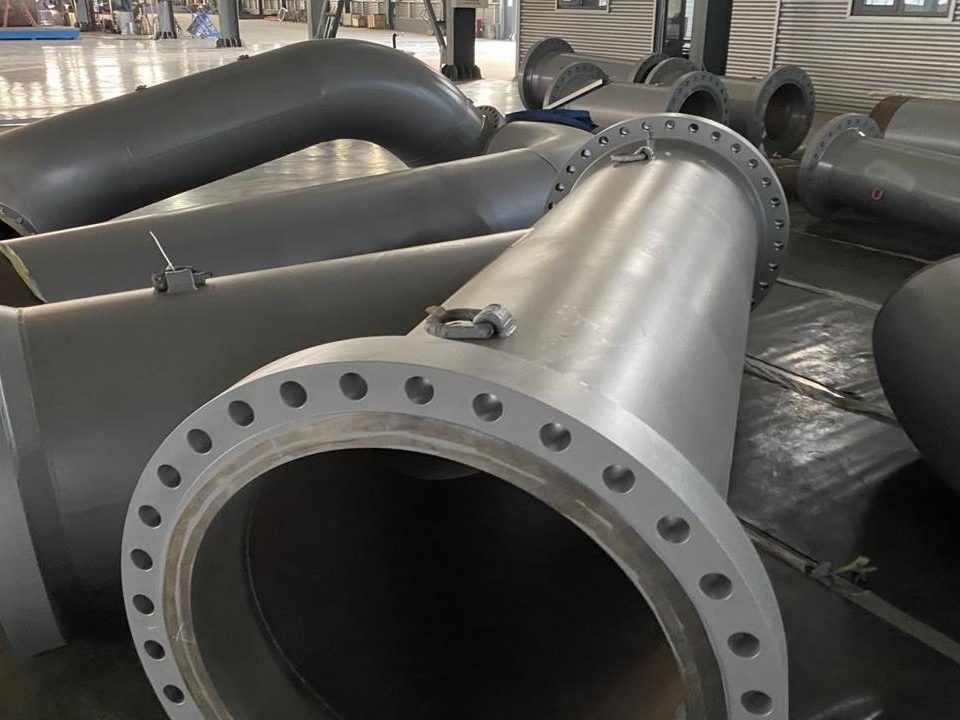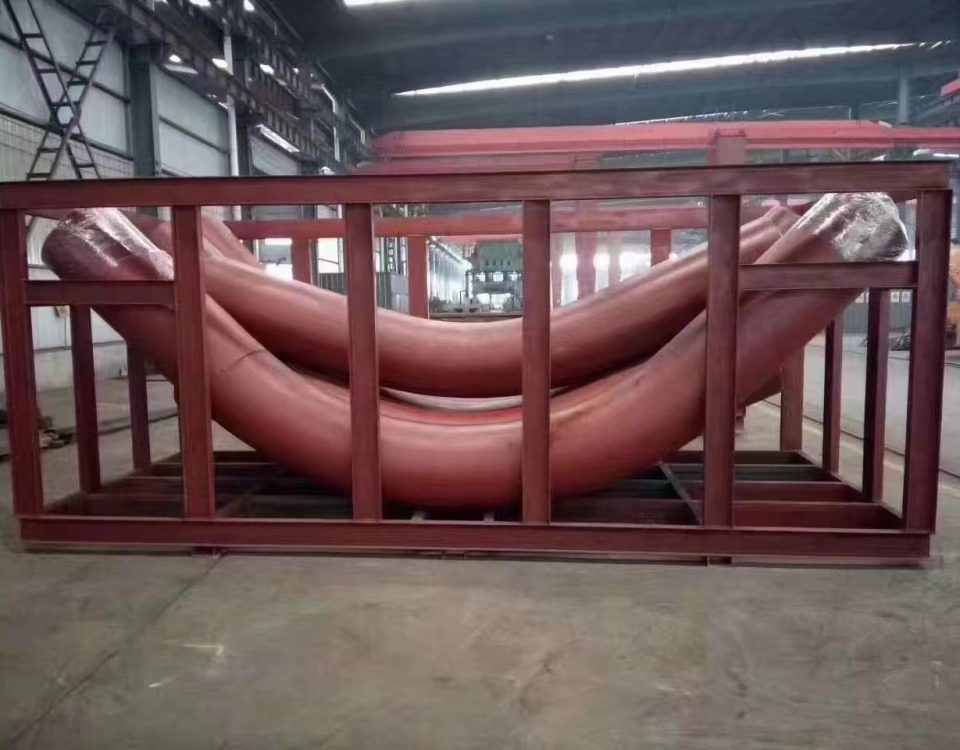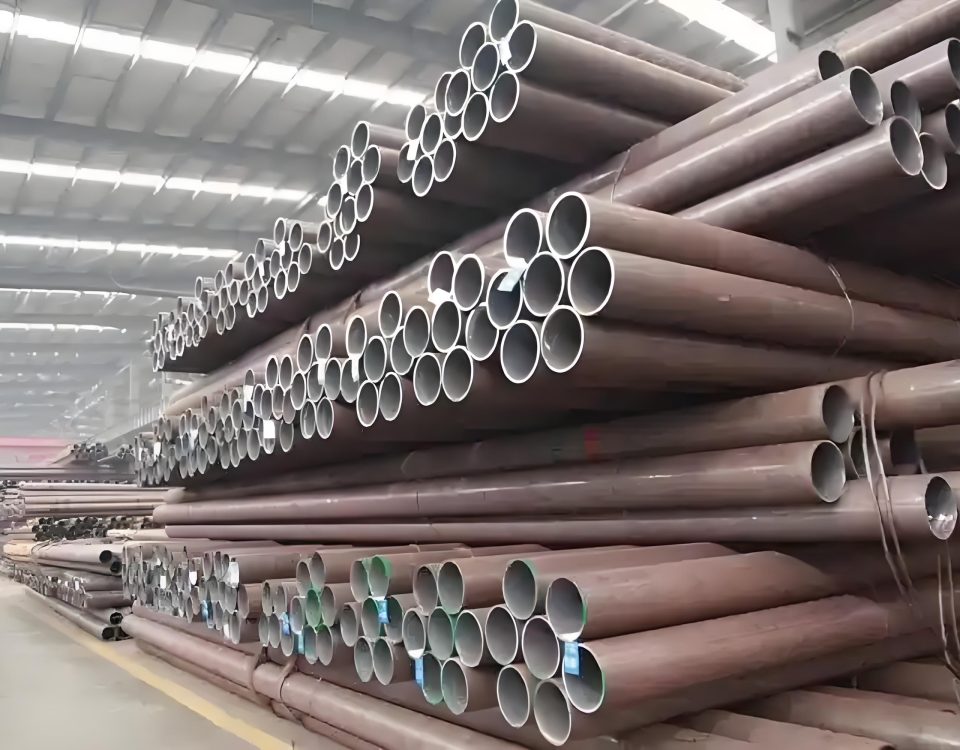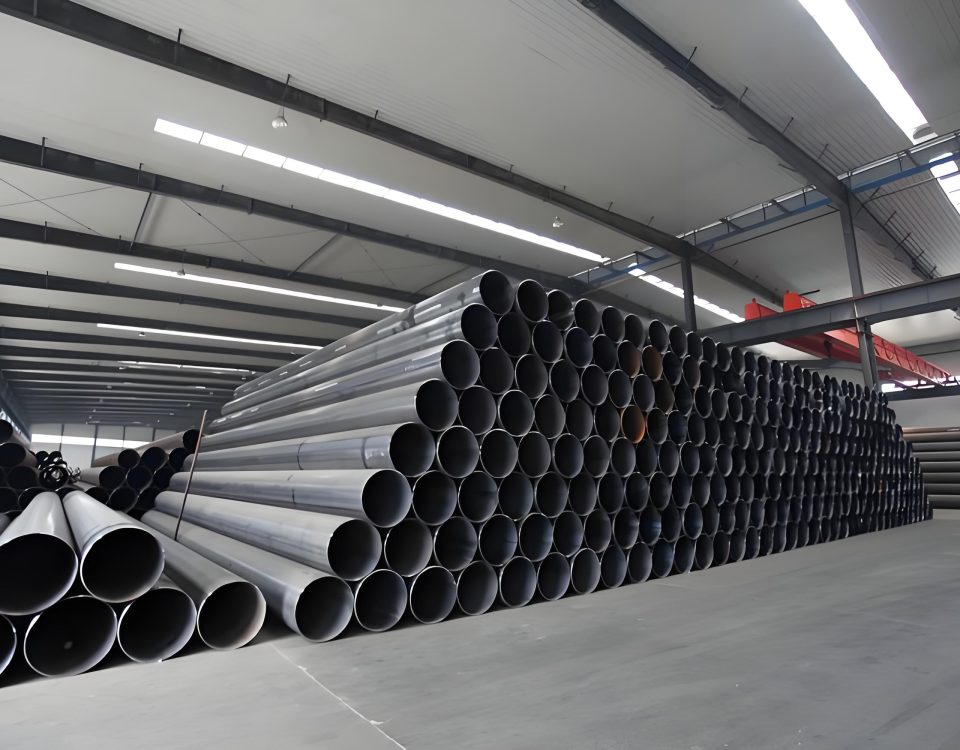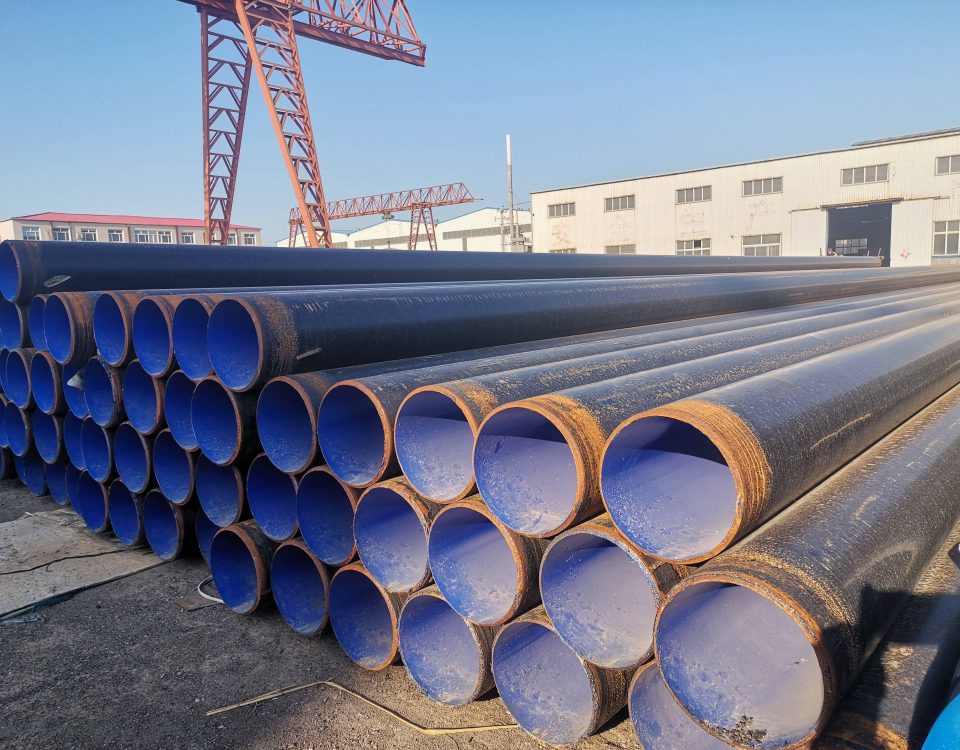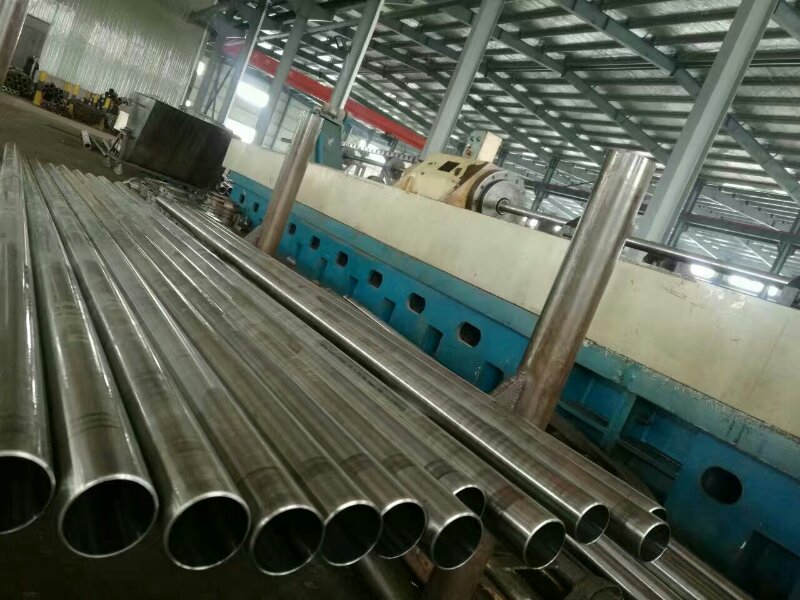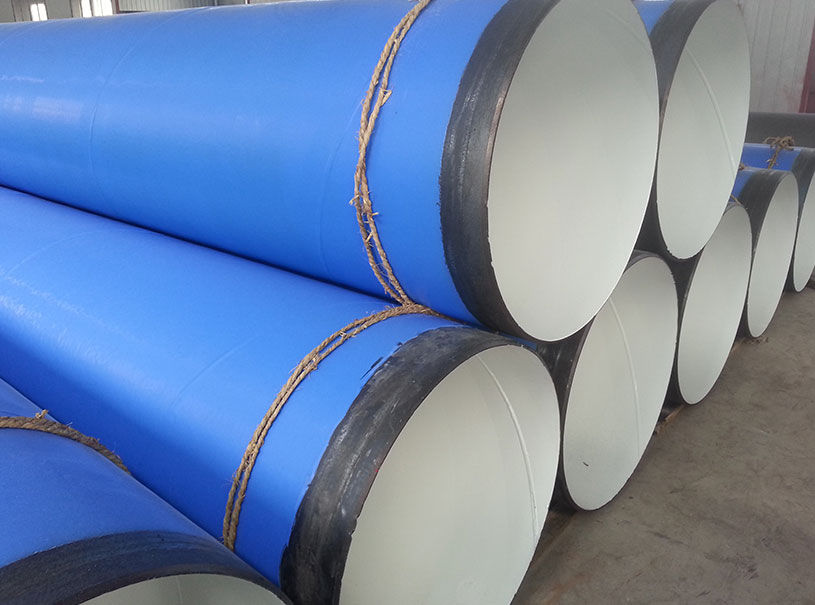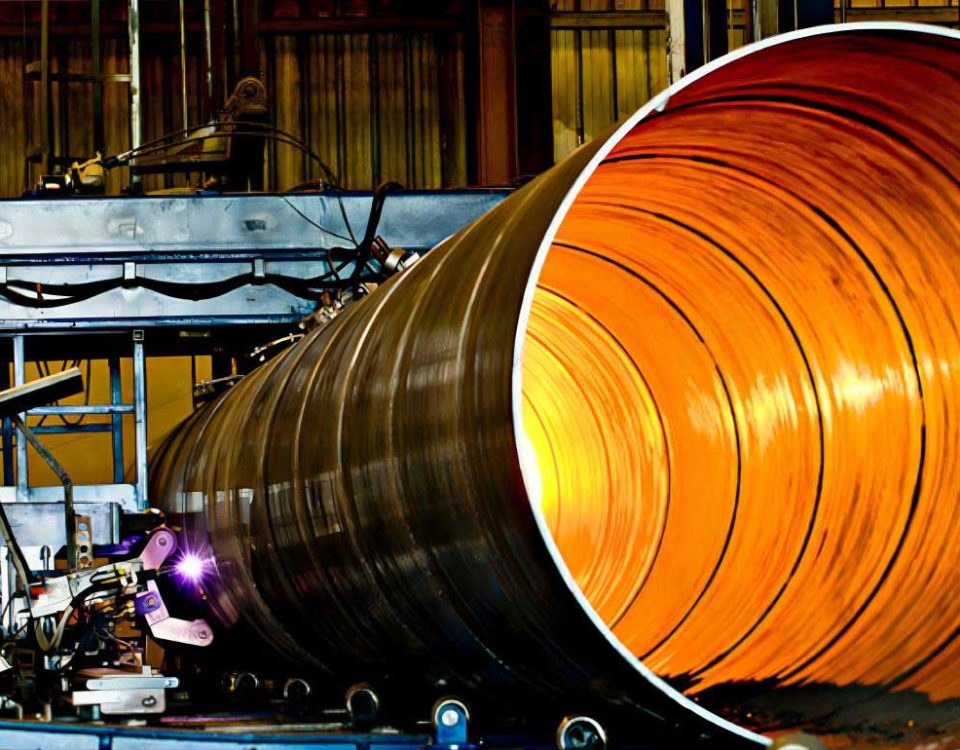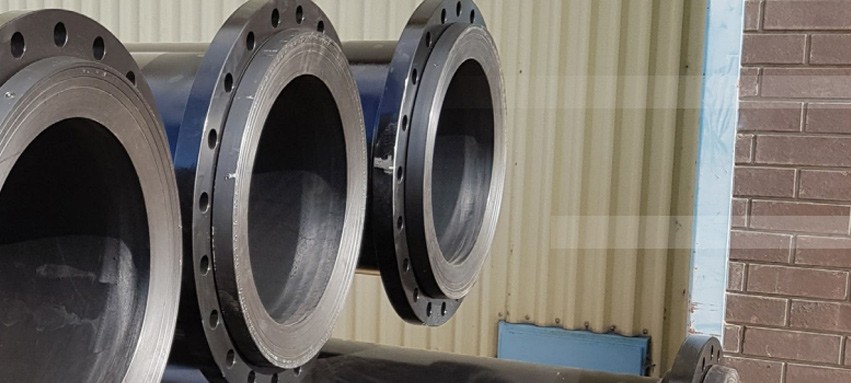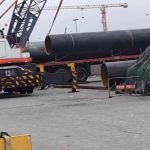
API 5L X70 Line Pipe Production Capability Overview
October 4, 2025The Engineering of High-Pressure Integrity: API 5L PSL2 X70 Line Pipe
The contemporary energy landscape is one of increasing complexity, defined by the necessity of transporting vast volumes of hydrocarbons—often over thousands of kilometers, across challenging terrains, and under punishing pressures. This logistical and technical imperative demands piping materials that are not only robust but metallurgically guaranteed to sustain integrity over decades. At the pinnacle of this requirement stands the API 5L PSL2 Grade X70 Line Pipe, the certified backbone of modern, high-pressure, large-diameter transmission systems.
This material represents a formidable engineering achievement, synthesizing advanced steel production techniques with the most stringent global quality assurance protocols. Our commitment to delivering X70 pipe under the rigorous Product Specification Level 2 (PSL2) certification—in both seamless and welded configurations—is our guarantee that these arteries of energy flow reliably, safely, and economically. We are addressing not merely a requirement for strength, but a mandate for uncompromising endurance against internal pressure, external load, fatigue, and environmental corrosion. To fully comprehend the value proposition of this product, one must delve into the core metallurgy of $\mathbf{X70}$, the non-negotiable demands of $\mathbf{PSL2}$, and the precise application of both seamless and welded manufacturing techniques.
The range of production and manufacturing that our company can provide:
I. The X70 Imperative: Metallurgy and Economic Efficiency
The designation $\mathbf{X70}$ signifies a minimum specified yield strength ($\mathbf{SMYS}$) of $70,000 \text{ psi}$ ($485 \text{ MPa}$). This high-strength capability is not merely a number; it is the cornerstone of economic efficiency in pipeline design.
The Economic Equation of Strength
In pipeline engineering, the required wall thickness ($\mathbf{t}$) is inversely proportional to the yield strength ($\mathbf{Y}$) of the steel, as defined by the Maximum Allowable Operating Pressure ($\mathbf{MAOP}$) calculation, which relies on the fundamental principles of Barlow’s formula (or more precisely, the D-T ratio constraint formulas found within ASME B31 codes):
Where $\mathbf{F}$ is the design factor and $\mathbf{E}$ is the joint efficiency factor (which equals 1.0 for seamless pipe, or slightly less for welded pipe). By employing X70 steel instead of, say, X52, engineers can safely reduce the pipe wall thickness for the same operating pressure. This reduction translates directly into immense savings across the entire project lifecycle: lower material tonnage, reduced welding time and costs (due to thinner walls), and reduced freight and installation expenses. This structural economy is only possible because the material science is guaranteed not to fail catastrophically.
The Metallurgical Challenge: $\text{TMCP}$ and Micro-Alloying
Achieving $70,000 \text{ psi}$ $\text{SMYS}$ while simultaneously retaining the necessary ductility and fracture toughness (essential for preventing running brittle fractures) is a profound metallurgical challenge. $\text{X70}$ steel is an $\mathbf{HSLA}$ (High Strength Low-Alloy) grade, where strength is achieved not by high carbon content (which would make the steel brittle and difficult to weld), but through meticulously controlled grain refinement and precipitation hardening.
This control is primarily managed through the **Thermo-Mechanical Control Process ($\text{TMCP}$)**. During the rolling phase of production, the steel’s temperature and deformation are precisely governed, avoiding conventional high-temperature rolling. This results in an ultrafine, uniform grain structure, which enhances both strength (via the Hall-Petch relationship) and low-temperature toughness. The process leverages tiny additions of **micro-alloying elements**—Niobium ($\text{Nb}$), Vanadium ($\text{V}$), and Titanium ($\text{Ti}$)—which prevent grain growth during the heating and rolling phases. The efficacy of the final X70 pipe is a direct function of the mill’s ability to execute this $\text{TMCP}$ cycle flawlessly.
II. The Uncompromising Standard: API 5L Product Specification Level 2 ($\text{PSL2}$)
The decision to specify $\mathbf{PSL2}$ for $\text{X70}$ line pipe fundamentally elevates the quality expectation from a standard commodity item to a mission-critical engineered component. $\text{PSL2}$ requirements are designed specifically for pipelines operating under severe conditions, where the consequences of failure—in terms of environmental damage, safety, and business interruption—are highest.
Mandatory Fracture Toughness (Charpy Impact Testing)
The single most distinguishing feature of $\text{PSL2}$ is the requirement for **Mandatory Notch Toughness Testing** via the **Charpy V-Notch (CVN) Impact Test**. Unlike $\text{PSL1}$, which may or may not require this test, $\text{PSL2}$ stipulates a minimum absorption energy value for the steel at a specified low temperature (often $0^\circ\text{C}$ or $-20^\circ\text{C}$). This test is the definitive proof that the $\text{X70}$ material, despite its high strength, retains sufficient ductility to resist brittle fracture propagation—a phenomenon that can rapidly travel across an entire pipeline. The precise $\text{CVN}$ energy level is calculated based on the pipe’s thickness, diameter, and grade, demonstrating resilience against dynamic loads and sudden decompression.
Stricter Chemical and NDE Controls
$\text{PSL2}$ imposes significantly tighter limits on critical elements, particularly **Carbon (C), Sulfur (S), and Phosphorus (P)**. Low carbon equivalents are essential for excellent field weldability, a necessity for X70. Furthermore, the mandatory $\text{PSL2}$ requires comprehensive **Non-Destructive Examination ($\text{NDE}$)**:
- Full-Body $\text{NDE}$: All pipe bodies must be examined, typically using ultrasonic testing ($\text{UT}$).
- Hydrostatic Testing: The final integrity check is a mandatory hydrostatic test, where the pipe is pressurized to a minimum level (often $90\%$ of $\text{SMYS}$) to prove fitness for high-pressure service before it leaves the factory.
The $\text{PSL2}$ standard acts as a critical filter, ensuring only pipe manufactured under the strictest quality control and proven by rigorous testing is permitted for mainline transmission service.
III. The Manufacturing Dualism: Seamless Versus Welded $\text{X70}$
The market demands $\text{X70}$ strength across the full spectrum of sizes and wall thicknesses, necessitating two distinct manufacturing approaches: seamless and welded. The choice between them is determined by application, diameter, pressure requirement, and economic constraints.
Seamless ($\text{SMLS}$): The Epitome of Structural Purity
Seamless pipe is produced by piercing a heated, solid steel billet, resulting in a product with no welded seam.
- Application Niche: Seamless $\text{X70}$ is typically selected for small to medium diameters (e.g., $2 \text{ inches}$ to $24 \text{ inches}$), extremely high-pressure service (e.g., station piping, risers), and applications requiring very thick walls or complex geometry (such as forming induction bends).
- Structural Advantage: The key feature is the elimination of the longitudinal weld seam, which is the most common potential initiation point for defects, $\text{SCC}$ (Stress Corrosion Cracking), and fatigue failure. For critical service or those requiring the highest design factor ($\mathbf{F}$), the seamless $\text{PSL2}$ construction provides maximum confidence.
Welded ($\text{SAW}/\text{ERW}$): Large Diameter and Efficiency
For the vast majority of mainline transmission projects involving large diameters (typically $24 \text{ inches}$ to $60 \text{ inches}$ or more), **welded pipe** is the manufacturing standard, delivering economies of scale. $\text{X70}$ welded pipe primarily utilizes two methods:
- Submerged Arc Welded ($\text{SAW}$): This technique involves **Double Submerged Arc Welding** ($\text{DSAW}$), where the weld is executed both internally and externally. $\text{SAW}$ pipe (specifically $\mathbf{LSAW}$ or Longitudinal $\text{SAW}$) is preferred for the largest diameters and heaviest wall thicknesses. The $\text{PSL2}$ standard is particularly demanding here, requiring the weld and its associated $\text{HAZ}$ to meet the same stringent tensile and $\text{CVN}$ toughness values as the parent material—a true test of the welding procedure specification ($\text{WPS}$).
- Electric Resistance Welded ($\text{ERW}$): Primarily used for medium diameters and standard wall thicknesses. The $\text{PSL2}$ specification demands a full-body heat treatment of the weld seam zone to eliminate the brittle martensite/bainite structure that can form in the $\text{HAZ}$, ensuring full metallurgical homogenization.
For both $\text{SAW}$ and $\text{ERW}$ X70 pipe, the $\text{PSL2}$ requires $100\%$ inspection of the entire weld seam using $\text{UT}$ and often supplemented by radiographic examination, ensuring the joint efficiency factor ($\mathbf{E}$) remains at the highest allowable rating.
IV. Quality Assurance: Certification and The Final Proof
The theoretical strength of $\text{X70}$ and the stringent requirements of $\text{PSL2}$ are validated only through a comprehensive, multi-stage quality assurance protocol that goes far beyond routine checks.
Destructive and Non-Destructive Examination ($\text{NDE}$)
The pipeline integrity is confirmed via a rigorous inspection sequence:
- Weld Seam Integrity: For welded pipe, $100\%$ of the weld seam is subjected to **Automated Ultrasonic Testing ($\text{AUT}$)**. This advanced technique can detect internal flaws, slag inclusions, or lack of fusion. This is supplemented by **Radiographic Testing ($\text{RT}$)** at the ends of the pipe.
- Material Property Verification: **Tensile Tests** are conducted on samples from every heat to confirm the $70,000 \text{ psi}$ $\text{SMYS}$. For welded pipe, the tensile specimen is taken across the weld seam to ensure the weld metal and $\text{HAZ}$ are stronger than the parent metal.
- Toughness Guarantee: **Charpy V-Notch (CVN)** tests are performed at specified temperatures (e.g., $0^\circ\text{C}$) and locations (parent material, $\text{HAZ}$, and weld metal), providing the non-negotiable proof that the $\text{PSL2}$ toughness requirements are met.
- Final Hydrostatic Test: Every single length of $\text{PSL2}$ pipe is subjected to a hydrostatic test—the most effective non-destructive test. The pipe is internally pressurized with water to a level that stresses the pipe to nearly its yield point. This pressure test acts as the final “proof load,” confirming the pipe’s resistance to rupture and verifying the success of all preceding manufacturing and $\text{NDE}$ steps.
Traceability and Certification Documentation
Our commitment to $\text{API 5L PSL2 X70}$ extends to comprehensive, detailed certification documentation. Every pipe length is traceable to its original heat number, providing a complete record of the $\text{TMCP}$ process, chemical composition, mechanical test results, and $\text{NDE}$ reports. This is critical for end-user compliance and lifetime integrity management of the pipeline asset.
V. Strategic Applications and Core Features
The technical superiority of $\text{API 5L PSL2 X70}$ line pipe makes it the material of choice across several high-stakes operational environments, driven by a specific set of performance features.
Key Application Contexts
- Long-Distance High-Pressure Transmission: Used globally for major intercontinental pipelines where $\text{MAOP}$ is maximized to achieve the highest possible throughput. The $\text{X70}$ strength minimizes material usage and installation costs over vast distances.
- Deep-Water and Subsea Pipelines: Selected for its reliability under combined external hydrostatic pressure and internal fluid pressure. The high strength-to-weight ratio is crucial for managing laying stresses and optimizing buoyancy control during installation. $\text{PSL2}$ seamless is often mandatory for high-stress risers.
- Sour Service Environments: While specific $\text{PSL2}$ supplemental requirements ($\text{SR}$) like $\text{HIC}$ (Hydrogen Induced Cracking) and $\text{SSC}$ (Sulfide Stress Cracking) testing must be applied, the inherent clean steel chemistry and controlled microstructure of $\text{X70}$ manufactured under $\text{PSL2}$ protocols provide a superior baseline for resisting corrosive media like wet $\text{H}_2\text{S}$ (sour gas).
Critical Design Features
- Superior Crack Arrest Capability: The guaranteed toughness ($\text{CVN}$ values) ensures that if a crack initiation event occurs (e.g., from an external dent or impact), the crack will rapidly arrest rather than propagate along the pipeline, preventing catastrophic failure.
- Reduced Field Welding Costs: The higher strength $\text{X70}$ allows for reduced wall thickness, which in turn reduces the necessary weld volume, leading to faster welding cycles and lower labor costs during field installation.
- Enhanced Strain Capacity: For pipelines in seismically active or landslide-prone areas, the $\text{PSL2}$ grade is engineered with excellent strain capacity—the ability to undergo plastic deformation without fracturing—providing resilience against ground movement that would shatter lower-grade materials.
In summation, the $\text{API 5L PSL2 X70}$ pipe is not merely a component; it is a meticulously engineered system designed for the most critical energy transport challenges of the 21st century, where failure is simply not an option.
VI. Comprehensive Technical Specifications
The following tables summarize the critical material composition, dimensional parameters, and specifications that govern our API 5L PSL2 X70 line pipe, providing the essential data for engineering design and procurement.
A. API 5L PSL2 X70 Material and Chemical Specification (Reference)
This chemistry is strictly controlled, particularly the Carbon Equivalent ($\text{CE}$) which directly affects field weldability. $\text{CE}$ is kept low to ensure the $\text{X70}$ remains readily weldable despite its high strength.
| Parameter | Grade X70 / L485 | Standard Limit ($\text{PSL2}$) | Unit | Specification Detail |
|---|---|---|---|---|
| Minimum Yield Strength ($\text{SMYS}$) | $485$ | $485 \text{ min}$ | $\text{MPa}$ | Defines $\text{X70}$ rating. |
| Minimum Tensile Strength ($\text{SMTS}$) | $570$ | $570 \text{ min}$ | $\text{MPa}$ | $\text{PSL2}$ mandated minimum. |
| Carbon ($\text{C}$) | $0.06 – 0.12$ | $0.20 \text{ max}$ | $\%$ | $\text{PSL2}$ lower limit for welded pipe. |
| Sulfur ($\text{S}$) | $0.001 – 0.005$ | $0.005 \text{ max}$ | $\%$ | Extremely low for toughness/sour service. |
| Phosphorus ($\text{P}$) | $0.010 – 0.015$ | $0.015 \text{ max}$ | $\%$ | Controlled to prevent embrittlement. |
| Manganese ($\text{Mn}$) | $1.40 – 1.80$ | $1.80 \text{ max}$ | $\%$ | Primary strength and toughness contributor. |
| Carbon Equivalent ($\text{CE}$) | $0.35 – 0.43$ | $0.43 \text{ max}$ | $-$ | Controlled for field weldability (IIW formula). |
B. Dimensional Range and Manufacturing Methods
Our manufacturing capability supports the diverse requirements of the global pipeline market, utilizing the most appropriate method for each size range.
| Feature | Seamless ($\text{SMLS}$) | Welded ($\text{SAW}$ / $\text{ERW}$) | Unit | Application Focus |
|---|---|---|---|---|
| Outer Diameter ($\text{OD}$) Range | $2.375 – 24$ ($\approx 60 – 610$) | $20 – 60+$ ($\approx 508 – 1524+$) | Inches (mm) | Small, high-pressure lines (SMLS); Large mainline (Welded). |
| Wall Thickness ($\text{WT}$) Range | Up to $1.5$ ($\approx 38.1$) | Up to $1.5$ ($\approx 38.1$) | Inches (mm) | Heavy wall for risers (SMLS); Standard/heavy wall for mainline (Welded). |
| Pipe Length | Single ($6 – 13.7$) / Double ($> 13.7$) | $12 – 24$ (Double Random) | Meters | Optimized for transportation and field welding. |
| Joint Efficiency ($\text{E}$) | $1.0$ | $1.0$ ($\text{PSL2 NDE}$ confirmed) | $-$ | Max factor used in pressure calculation. |
C. Application and Design Features Summary
The combined features of $\text{PSL2}$ and $\text{X70}$ result in a product portfolio optimized for maximum performance and cost-efficiency in demanding operational environments.
| Specification Category | Core Feature | Associated Benefit / Impact | Key Application |
|---|---|---|---|
| Standard | $\text{API 5L PSL2}$ | Mandatory $\text{CVN}$ toughness and $100\% \text{NDE}$ guarantee. | Sour Service, High Consequence Areas. |
| Strength | Grade $\text{X70}$ ($\text{SMYS}$) | Reduced wall thickness for given pressure; lower overall material cost. | Long-Distance Transmission. |
| Quality | Seamless / $100\% \text{UT}$ Weld | Elimination of seam defects (SMLS) or confirmed seam integrity (Welded). | Critical Risers, Compressor Station Piping. |
| Design | $\text{TMCP}$ Microstructure | Superior resistance to brittle fracture and crack propagation. | Arctic / Low-Temperature Environments. |
| Weldability | Low Carbon Equivalent ($\text{CE}$) | Simplified field welding procedures; reduced preheat requirements. | Remote Field Installation Projects. |
VII. Advanced Mechanical and Fracture Mechanics
The high strength of $\text{X70}$ steel inherently increases its susceptibility to brittle failure if not managed correctly. $\text{PSL2}$ guarantees that the pipe possesses sufficient **toughness** to handle the stored energy of high-pressure gas, preventing instantaneous, long-running fractures.
Drop Weight Tear Test ($\text{DWTT}$)
While the $\text{Charpy V-Notch (CVN)}$ test provides localized toughness data, the **Drop Weight Tear Test ($\text{DWTT}$)** is often required as a supplementary test for large-diameter $\text{PSL2}$ pipe. The $\text{DWTT}$ specimen is much larger, representing the full wall thickness of the pipe, and measures the percentage of shear fracture area. For modern pipelines, the requirement is typically $\mathbf{85\%}$ to $\mathbf{100\%}$ shear fracture at the lowest operating temperature. This test is the most direct indicator of the material’s ability to resist brittle fracture propagation, a non-negotiable safety feature for gas pipelines.
High Strain Capacity
Modern pipeline design accounts for ground movements in challenging environments (e.g., permafrost, seismic zones). The ability of the pipe to absorb large plastic strains without fracturing is known as **Strain Capacity**. The careful $\text{TMCP}$ process and clean steel chemistry of $\text{PSL2 X70}$ are specifically engineered to maximize this property. This is achieved by ensuring a low ratio of yield strength to tensile strength ($\mathbf{Y/T}$ ratio), typically kept below **$0.9$**. A lower $\text{Y/T}$ ratio indicates the steel has a longer, more stable plastic deformation phase, giving engineers confidence that the pipeline can accommodate significant ground deformation before rupturing.
VIII. Sour Service Resistance and Chemical Purity
Many of the world’s remaining hydrocarbon reserves contain significant amounts of hydrogen sulfide ($\text{H}_2\text{S}$) and carbon dioxide ($\text{CO}_2$), classified as “sour service.” This requires materials with extreme resistance to environmentally assisted cracking.
Hydrogen-Induced Cracking ($\text{HIC}$)
$\text{HIC}$ occurs when atomic hydrogen (formed by the corrosion of steel in acidic $\text{H}_2\text{S}$ environments) diffuses into the steel, collects at non-metallic inclusions (primarily manganese sulfides), and precipitates as molecular hydrogen, creating immense internal pressure that leads to cracking.
The $\text{PSL2}$ specification, often combined with supplementary requirement $\mathbf{SR18}$ (for $\text{HIC}$ resistance), addresses this by demanding:
- Ultra-Low Sulfur and Phosphorus: Sulfur (S) and Phosphorus (P) are residual elements that form non-metallic inclusions. $\text{PSL2}$ demands extremely low limits for these elements (S $\le 0.003\%$, $\text{P} \le 0.015\%$) to minimize the number of internal crack initiation sites.
- Inclusion Shape Control: Using micro-alloying elements like Calcium ($\text{Ca}$) to change the morphology of the remaining sulfide inclusions from elongated (which aids crack growth) to globular (which is harmless).
The result is a $\text{PSL2 X70}$ product that demonstrates superior resistance to $\text{HIC}$ in tests governed by $\text{NACE TM0284}$.
Sulfide Stress Cracking ($\text{SSC}$)
$\text{SSC}$ is a brittle failure mechanism that occurs under the combined effects of tensile stress and corrosion in $\text{H}_2\text{S}$ environments. The high strength of $\text{X70}$ makes it more susceptible to $\text{SSC}$ than lower-grade steels if its hardness is not rigorously controlled. Our $\text{PSL2}$ production ensures the finished pipe and, critically, the **weld $\text{HAZ}$ (Heat Affected Zone)**, maintain a maximum hardness limit (typically $\mathbf{248}$ HV10 maximum). This strict hardness control prevents the formation of brittle microstructures that are vulnerable to $\text{SSC}$, guaranteeing the pipe’s suitability for high-stress, sour applications.
IX. Fabrication and Field Weldability
A pipe is only as strong as its weakest field weld. The $\text{X70}$ grade, despite its complex metallurgy, is specifically designed to maximize **field weldability** without requiring complex or time-consuming pre-heat treatments, which are costly in remote environments.
The Role of Carbon Equivalent ($\text{CE}$)
The **Carbon Equivalent ($\text{CE}$)** is the single most important metric for weldability. It mathematically combines the hardening effects of all major alloying elements ($\text{C}, \text{Mn}, \text{Cr}, \text{Mo}, \text{V}, \text{Ni}, \text{Cu}$) into a single value, typically calculated using the International Institute of Welding ($\text{IIW}$) formula:
$\text{PSL2 X70}$ steel achieves its strength through $\text{TMCP}$ and micro-alloying rather than high carbon content, allowing for a **low $\text{CE}$ value (typically below $0.43$)**. This low $\text{CE}$ is essential because it minimizes the risk of forming brittle, untempered martensite in the weld $\text{HAZ}$ upon rapid cooling in the field. A low $\text{CE}$ ensures the pipe can be welded quickly, reliably, and consistently, leading to lower project costs and faster commissioning times.
End Preparation and Fit-Up
The dimensional accuracy of the pipe ends is verified by the $\text{PSL2}$ requirements. Precise **bevel preparation** and strict control over **out-of-roundness** (ovality) are critical for large-diameter $\text{X70}$ pipe. Poor fit-up at the joint can induce unnecessary stress and lead to defects during field welding. Our manufacturing tolerance limits are significantly tighter than those of $\text{PSL1}$, ensuring optimal alignment and facilitating the use of automated welding techniques common in major pipeline projects.
X. Conclusion: The Paradigm of Performance
The **API 5L PSL2 X70 Seamless and Welded Steel Line Pipe** is the culmination of decades of metallurgical research and uncompromising quality control. It is a product that transcends its base material specification, offering a solution where maximum strength is achieved without sacrificing the critical safety margins of ductility, toughness, and weldability.
Whether selected in its **Seamless** form for small-diameter, high-pressure risers requiring absolute structural homogeneity, or in its **Welded** form for cost-efficient, large-diameter mainline transmission, the $\text{PSL2 X70}$ designation confirms its fitness for the most demanding global energy projects. By guaranteeing superior fracture toughness ($\text{CVN}, \text{DWTT}$), controlling microstructure for $\text{HIC}$ resistance, and maintaining a low $\text{CE}$ for optimal field fabrication, this line pipe provides the paradigm of high-pressure integrity necessary for sustaining the world’s critical energy infrastructure.

